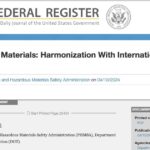In mid-January, under brutally cold conditions, a fire erupted in a Passaic, N.J. World War II-era factory used for storage in an industrial complex. The fast-moving fire quickly reached 11 alarms and took more than a day to get under control. Temperatures were in the 20s at the time of the fire with a storm pushing Arctic air in.
Despite the heavy fire conditions and rapidly icing surfaces, firefighters kept the situation from becoming a major hazmat incident.
The fire started in what began as a casino furniture manufacturing facility, but for the past two years was used to store pallets, plastics and some chlorine, NBC News reported. While the chlorine and plastics at the warehouse were concerning, right next door was a 200,000-square-foot chemical manufacturing operation that specialized in swimming pool and spa chemicals. It was that connecting exposure that firefighters kept safe. And it was that exposure that would have kicked off a huge hazmat response had it become fully involved. In fact, the chlorine being stored in the warehouse belonged to the manufacturing operation.
The complex is near the Passaic River and has some 70,000 residents crammed into 3.2 square miles, which it’s mayor says is one of the most densely populated cities in the country.
“If the fire were to hit the main chemical plant, it would obviously create issues beyond what our immediate resources would be able to resolve,” Passaic Mayor Hector Carlos Lora said, via NBC News.
Also Read: Major Radiation Near-Miss Inspires Hazmat Training
Lora and New Jersey Gov. Phil Murphy advised residents to remain inside with windows closed. New Jersey environmental air-quality officials monitored the smoke and fumes.
NorthJersey.com reported that the company stores about 3 million pounds of potentially hazardous substances on an average day, ranging from industrial disinfectants to bleaching agents, according to a 2020 inventory list sent to state regulators.
This incident definitely goes into the “hazmat near-miss” file. And although nothing cataclysmic happened, there are still lessons we can pull from it. Here are three of those lessons.
ONE
Know the ways out. Be sure evacuation plans are up-to-date and inclement weather is taken into account. Heavy rain, snow and fog will delay moving people. In this densely populated area, knowing current and near-term weather and having air monitoring under way was key. Getting early, often and accurate communication to residents and visitors will be critical if an evacuation is warranted.
TWO
Know the hot spots. It is much easier to Monday morning quarterback this near miss than it is to run it as incident command. Having hazmat hot spots built into pre-incident plans or kept at the ready by the hazmat team will help incident commanders set priorities when it comes to protecting exposures. An adjacent machine shop or parts warehouse won’t get nearly the attention as will a facility housing 3 million pounds of hazardous materials. Fire officers need to know how to access that list of hot spots, and hazmat team leaders should be ready to offer that information on large calls.
THREE
Train for the worst weather. This is always easier said than done. Iced-over conditions, like this fire, or a downpour are no fun to train in, but necessary if the hazmat team is needed. As always, the difficulty is making the training both safe and realistic.
Original post – Copyright © 2022 HazmatNation.com. Externally linked references may hold their own independent copyright not assumed by HazmatNation











